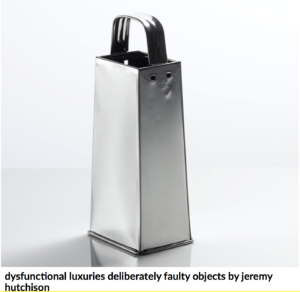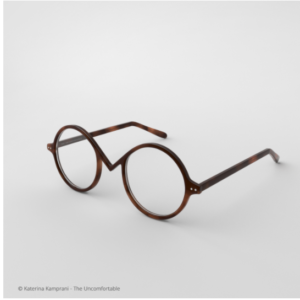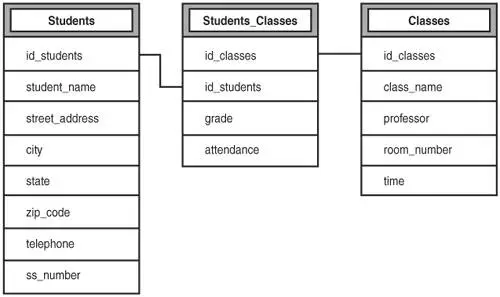As technologies improve and the software becomes more powerful, so do the opportunities for designers to create new and exciting products, services and systems. Greater freedom in customization and personalization of products has a significant impact on the end user. The ability to virtually prototype, visualize and share designs enhances the whole design cycle from data analysis through to final designs.
The use of CAD to simulate the conditions in which a product will be used allows the designer to gain valuable data at low cost. For example, simulating the flow of air across a car exterior negates the need for a car and wind tunnel.
What is CAD?
| https://www.youtube.com/watch?v=cwKWPGvujsM&feature=emb_logo |
Term: Computer Aided Design (CAD) – The use of computers to aid the design process.
CAD is using computers to aid the design process, this could include creating and modifying designs (products), graphic design, data processing, analysis (FEA) or simulations.
Types of CAD Software
EHow describes the different software packages.
| 2D | 3D | Rendering |
|
|
|
Advantages and Disadvantages of Using Computer-Aided Modelling
-
Discuss the advantages and disadvantages of using software applications in different design contexts. – Consider product design, architecture and graphic design.
| Advantages | Disadvantages |
|
|
|
|
|
Surface and Solid Models
-
Comparison of the differences between solid and surface modelling techniques.
-
Solid modelling techniques contain more information for the designer,
-
In order to produce a 3D model using CNC (computer numerical control) or RP (rapid prototyping) technologies
-
Surface modelling only has wall thickness.
-
Bottom-Up and Top-Down Modeling
Term: “Top down” design is a product development process obtained through 3D, parametric and associative CAD systems. The main feature of this new method is that the design originates as a concept and gradually evolves into a complete product consisting of components and sub-assemblies.
Term: “Bottom Up” – A designer creates part geometry independent of the assembly or any modelling other component. Although there are often some design criteria established before modelling the part, this information is not shared between models. Once all parts are completed, they are brought together for the first time in the assembly.
- This allows for a database of parts that could be used elsewhere.
- Is carried out by adding components to existing parts/bodies/components.
Data Modelling Including Statistical Modelling
Term: Is a model that determines the structure of data.
- Data modelling is based on the data requirements for an application.
- This can take the form of a database, an organised collection of data.
- Data models structure data through database models. They can be flat file, relational or hierarchical.
- A wikipedia reference on Data modelling
- Statistical modelling is a mathematical model.
- Models of database include …
Virtual Prototyping
Term: Virtual prototyping – Photorealistic CAD-based interactive models that use surface and solid modelling. They can be considered ‘digital mock-ups’.
- designers can simulate a design visually and/or mathematically
- reduce lead times
- reduce development costs
- reduce or eliminate errors (as humans are not involved)
- improve quality
- easily scalable – such as in nanotechnology or aeroplanes.
- Discuss the cost-effectiveness offered by animation and virtual reality. This helps to reduce full-scale prototyping, which leads to a reduction in tooling costs, labour costs, energy and materials
Digital humans: motion capture, haptic technology, virtual reality (VR), and animation
Digital humans:
- are computer simulations of the biomechanics of the human body.
- help to predict how a human (real) will react in a variety of situation or environments (places or locations).
- Siemens has a great article on using digital humans in product design, manufacturing and so on
-
Digital humans can be used to represent joint resistance, discomfort, reach envelopes and visual fields.
-
They can be used, for example, to measure the impact of clothing on human performance.
Haptic technology (also know as force feedback technology):
- is an emerging technology that interfaces the user via the sense of touch.
-
How it works is by mechanical actuators apply forces to the user which gives them feedback.
-
By simulating the physics of the user’s virtual world, it is possible to compute these forces into real time.
-
Haptic technology allows the user to become part of a computer simulation and to interact with it, enabling the designer to observe the user’s performance and to design a better outcome.
- It can be used in different environments particularly ones that are dangerous to humans, remote locations or in difficult locations to train in.
-
Haptic technology is employed in many gaming (home entertainment) consoles providing feedback such as the Wii Nintendo.
- Mashable article on remote surgery
- BBC article on remote surgery
Virtual Reality – The ability to simulate a real situation on the screen and interact with it in a near-natural way.
Animation …The ability to link graphic screens together in such a way as to simulate motion or a process.
Motion capture … The recording of human and animal movement by any means, for example, by video, magnetic or electro-mechanical devices.
-
Explain how motion capture is used to digitally represent motion.
-
A person wears a set of acoustic, inertial, LED, magnetic or reflective markers at each joint.
-
Sensors track the position of the markers as the person moves
-
this produces a digital representation of motion.
-
-
Identify the advantages of motion capture for digitally representing motion.
-
Motion capture can reduce the cost of animation, which otherwise requires the animator to draw either each frame or key frames that are then interpolated.
-
Motion capture saves time and creates more natural movements than manual animation, but is limited to motions that are anatomically possible. Some applications, for example, animated super-hero martial arts, might require additional impossible movements.
-
-
Explain how motion capture contributes to the development of a digital human.
-
A motion capture session records the movements of the actor, not his or her visual appearance.
-
The captured movements are mapped to a 3D model (human, giant robot) created by a computer artist, to move the model in the same way.
-
How haptic technology, motion capture, VR and animation can be used to simulate design scenarios and contexts
-
Compare animation and virtual reality. – Refer to different design contexts. Consider costs, client needs and development time.
-
Describe haptic technology.-
-
Also known as force feedback technology. Haptic technology works by using mechanical actuators to apply forces to the user.
-
By simulating the physics of the user’s virtual world, it is possible to compute these forces into real time.
-
-
Explain how haptic technology and motion capture have enhanced design capability.-
-
Haptic technology allows the user to become part of a computer simulation and to interact with it, enabling the designer to observe the user’s performance, so as to design a better outcome.
-
Haptic technology can also be used in situations where it may prove difficult to train in the real environment.
-
Haptic technology is also used in feedback devices used in home entertainment consoles.
-
Motion capturing a number of users’ movements will allow designers to design better ergonomic products.
-
Motion capture allows the designer to understand the users’ physiological requirements.
-
Finite element analysis (FEA)
FEA …The calculation and simulation of unknown factors in products using CAD systems. For example, simulating the stresses within a welded car part.
Compare FEA with testing physical models
-
Compare finite element analysis with real-life testing.
-
when testing vehicles consider
-
costs
-
type of environment,
-
weather
-
the user.
-
-
Use of FEA systems when designing and developing products
-
Explain how FEA can be used to show the forces acting upon an object while in use.
-
the maximum load of a vehicle and the stresses acting upon the vehicle
-
from the differences in terrain.
-
allow to redesign areas of weakness discovered through FEA
-
International Mindedness:
- Improved communication technologies allow designs to be developed collaboratively by different global teams on a 24/7 basis.
Theory of knowledge:
- How is new knowledge acquired through the use of digital models?
- Does technology allow us to gain knowledge that our human senses are unable to gain?











